The Meaning Behind the Traditional Easter Colors
There’s a deeper meaning behind the Easter celebration’s colorful picks. Learn the stories behind the hues, and how to work them into your Easter decor.
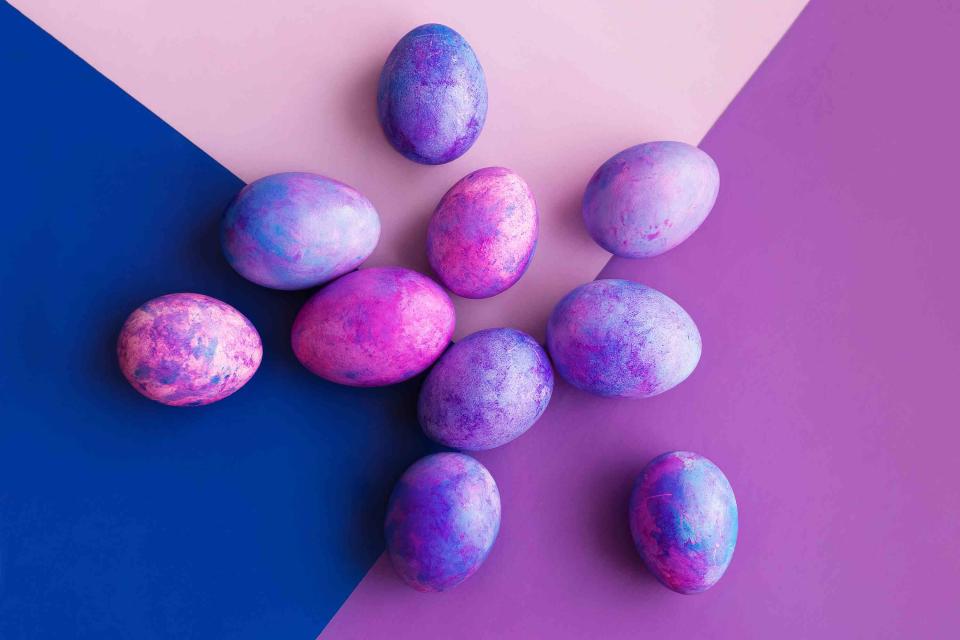
Dinara Abdrakhimova/Getty Images
Fact checked by Emily Peterson
Every holiday has its own unique color scheme—think orange and black for Halloween, red and green for Christmas, blue and silver for Hanukkah, or red and pink for Valentine’s Day. But Easter has a whole rainbow of beautiful colors associated with it, from spring-like pastels to some serious shades (hello, black?).
Read on for the meaning behind the traditional Easter colors, and how they came to be associated with the holiday—plus ways you can incorporate those colors into your Easter decorations.
Related: The Most Popular Easter Traditions, Explained
Purple or Violet
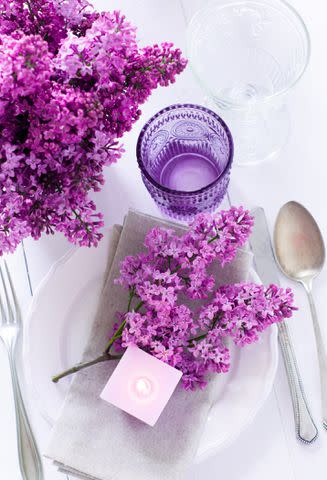
Getty Images
Purple historically was associated with royalty, due to the expense of creating the dye, which required harvesting a rare sea snail and drying out its mucus to create the hue. Some Roman emperors even forbid regular people from wearing the hue, and sentenced those who did to death, according to History.com. There’s some dissent between New Testament books, but the Gospels of Mark and John state that the soldiers dressed Jesus in a robe of purple at the crucifixion to mock him as “King of the Jews.”
During the Easter season, purple means sorrow and penance. It’s the traditional color of Lent, the 40 days before Easter when Christians prepare to celebrate the resurrection of Jesus. In churches, purple is often used in altar cloths, celebrant vestments, and floral arrangements or other decorations during the lead up to Easter.
How to use it: While you may see deep, rich purples in church for Easter, there’s no reason you can’t opt for a more spring-like lilac or pastel violet in your Easter decor. Choose spring flowers like purple tulips or hyacinth, irises, violets, lilacs, or pansies to adorn your table. (Potted plants can be placed or planted outside after they grace your Easter table.)
Related: Your Guide to Popular Easter Flowers
Pink
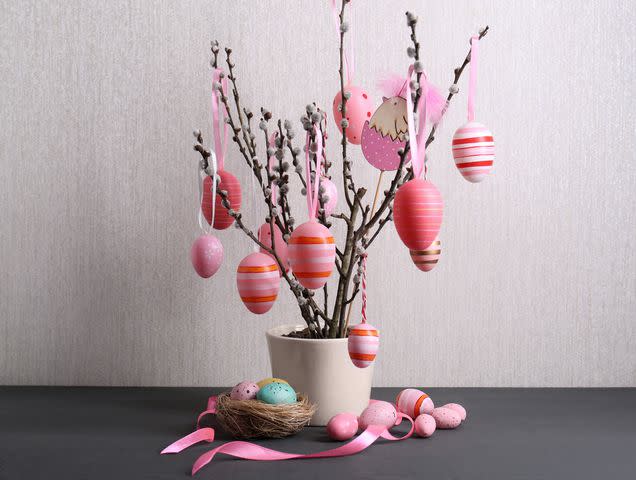
Getty Images
Soft pink is the color of sunrises, delicate spring flowers, and it’s associated with joy. Pink is used on Laetare Sunday, the fourth Sunday of Lent (or 21 days before Easter). It’s a midpoint in the Lenten season, and a time when those who are sacrificing things for Lent can take a breather. (No wonder it’s associated with joy!)
Related: Pink Homemade Egg Dye
How to use it: Pink is a common color in Easter decor, and odds are you’ll find it in abundance in holiday decorations. For Easter flower arrangements, consider tulips, flowering branches like cherry blossoms, and pink lilacs or hyacinth. You can even find new varietals of daffodils in soft blush hues.
Yellow or Gold
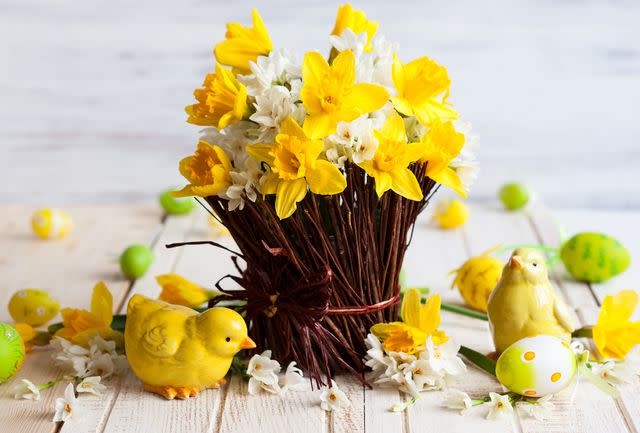
Getty Images
Gold is reserved for Easter Sunday, as a celebration of the joy of Christ’s triumph over death. Cheerful yellow is also the color of new chicks and sunshine, symbolizing the rebirth and renewal of spring.
How to use it: If you have gold-banded or trimmed dinnerware, vases, or candlesticks, now’s the time to pull it out for your Easter tablescape. Bold yellow daffodils are the ultimate cheerful choice for Easter decor. For a festive (and maybe a little offbeat) decoration, incorporate felted or fluffy yellow chicks—or even those goofy yellow Peeps—into your decor.
White
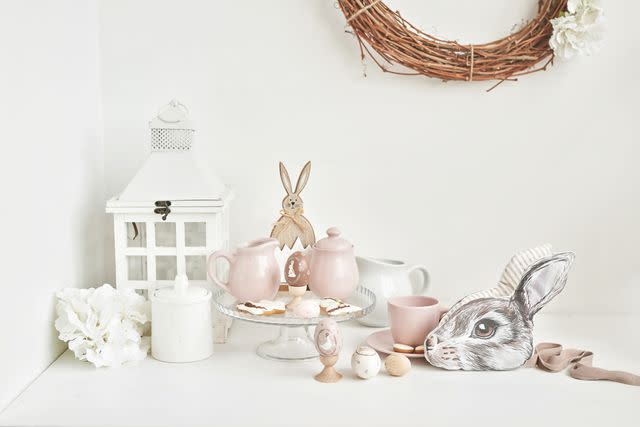
Getty Images
White symbolizes purity and innocence and regularly pops up both to commemorate the Last Supper on the Thursday before Easter (AKA Holy Thursday or Maundy Thursday), and Easter itself. White Easter lilies are a common choice for floral arrangements on Easter in the church, as the white lily is often featured in the Bible as a symbol of rebirth and new beginnings.
How to use it: For a traditional Easter decoration, you can’t go wrong with the bold white Easter lily—though you’ll find a number of spring blooms, from daffodils to tulips to lilacs that come in that soft shade. White’s a featured color in many secular Easter decorations, like the Easter bunny and lambs, so you’ll have no problem finding white decor for your Easter celebration.
Red
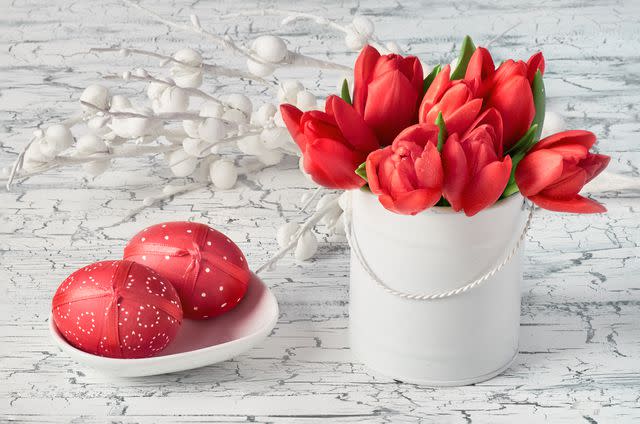
Getty Images
This fiery hue is associated with the passion of Christ and the blood he shed at his crucifixion. In some Gospel texts, Jesus is wearing a scarlet robe at his crucifixion.
How to use it: In the Greek Orthodox faith, Easter eggs are dyed this bold hue—but anyone who celebrates Easter can definitely opt for a few bold red eggs in their collection. Red tulips could be added in as a pop of color in floral arrangements.
Related: 14 Unique Easter Egg Designs That Will Let You Ditch the Boring Dye Kit
Black
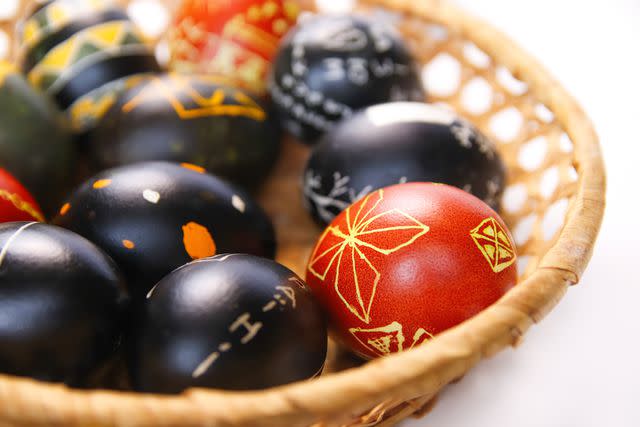
Getty Images
Black is traditionally the color associated with death, and it’s usually used during Easter on Good Friday in particular, as a color of mourning. You may find it used on altar cloths and elsewhere in the church for Good Friday services.
How to use it: Black’s probably the one Easter color that you want to use sparingly for this springy celebration. You could use black ink or crayons to create patterns on Easter eggs, or feature hints of black (like ebony-hued napkin rings or candlesticks) as part of your table decor as a counterpoint to the other bright and cheerful Easter colors.
Green
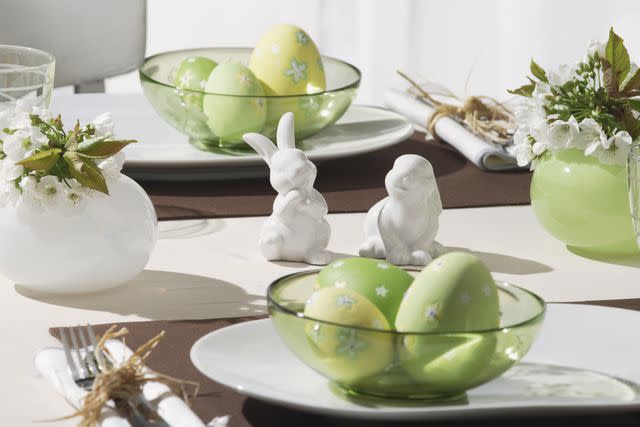
Westend61/Getty Images
Green is actually used most in the church after the Easter celebrations are over, as a symbol of hope and growth (the perfect colors for spring, too!).
How to use it: Green branches and palm leaves are associated with the Easter season, and can be a pretty counterpoint to other spring flowers. Adorn your table with small pots of herbs, grasses, or other greenery in lieu of flowers for an unexpected centerpiece.
Frequently Asked Questions
Why do we use pastel colors for Easter?
The spring season in general is a time of rebirth, with many light, bright colors coming back into nature. Think all those pretty spring flowers, tree blossoms, and fresh leaves. These same bright colors were often used in early pagan spring equinox celebrations (known as Ostara) as well to symbolize nature, fertility, and rebirth.
What are some popular Easter color palette ideas?
Easter color palettes can be as simple as you want (a very pale mix of white, cream, and blush) or represent all the colors of the rainbow. You can go with vibrant shades—bright purple, aqua, lime green, and peach—or softer earthy hues like latte, sky blue, grass green, and a sunny yellow.
If you like to keep it minimal, consider opting for flowers and decor that feature several variants and intensities of the same colors, such as a soft lavender with a deep purple and a barely-there blush.
For more Real Simple news, make sure to sign up for our newsletter!
Read the original article on Real Simple.

